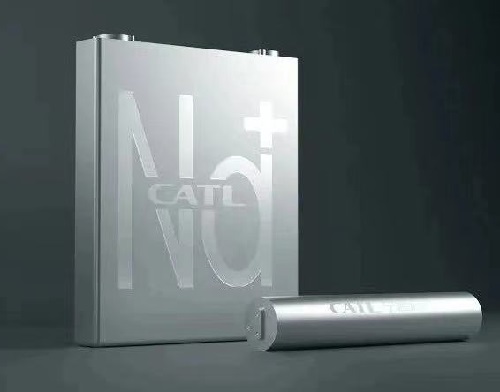At present, silicon anodes or silicon-carbon anode materials with high silicon content have the advantage of larger gram capacity, which is theoretically several or 10 times higher than that of existing graphite anodes.
Increasing energy density
Therefore, using silicon as the anode can greatly increase the energy density of lithium-ion batteries.
Silicon is an element of the same family of carbon, and silicon or silicon-carbon anode materials can achieve lithium insertion and DE lithiation electrochemically.

Sodium Batteries of CATL
However, due to the large volume expansion of silicon during the process of lithium insertion, it is easy to collapse after lithium removal, so theoretically the design is more difficult and the service life is poor.
Therefore, the silicon-carbon anode electrode may be more suitable as a “partner” for the high nickel ternary cathode electrode, which has a relatively short lifespan, and produces a battery cell with a high energy density and a cycle life that meets the needs of conventional use.
At present, the cost of silicon carbon anode is slightly higher, and there are still challenges such as volume expansion, low first efficiency and immature lithium supplement technology. It is expected that as these problems are solved, more models will be equipped with silicon carbon anode power batteries.
Before the industrialization of lithium anodes or lithium hybrid anodes, silicon carbon or silicon anodes are likely to have a certain market window period, the length of which depends on whether it can fill up its shortcomings and when the problems of the next version of lithium anodes will be overcome.
CATL’s sodium ion battery
In 2021, CATL has successfully launched a sodium ion battery with a single cell energy density of up to 160Wh/kg, and plans to increase the energy density of next-generation products to 200Wh/kg. In addition, the CATL sodium ion battery has obvious advantages in fast charging performance.
It can be charged at room temperature for 15 minutes, and the power can reach more than 80%; in a low temperature environment of minus 20 ℃, it can also have a discharge retention rate of more than 90%. System integration The efficiency can reach more than 80%.
At present, sodium-ion batteries are still in the early stages of industrialization, and power battery companies have deployed related technologies and production capacity. CATL said that it plans to basically form a sodium-ion battery industry chain in 2023.
Abundant reserves & low cost
Sodium reserves are abundant, widely distributed, and low in cost, which can be used to support the sustainable development of large-scale energy storage technology.
A new type of high-capacity, long-life, ultra-low-cost, and environmentally friendly soft carbon anode material-high-temperature cracking of anthracite, lays a key foundation for the practical application of anode materials for sodium-ion batteries. It benefits from lower material costs.
Sodium-ion batteries are better than lithium-ion batteries. The cost is usually 30% to 40% lower.
In 2025, the demand for potential application scenarios of sodium-ion batteries is 123GWh, which is measured by the price of lithium iron phosphate batteries, corresponding to a market space of about 53.7 billion yuan.
Relevant departments will support sodium-ion batteries to accelerate the transformation of innovation achievements and support the construction of advanced product mass production capacity.
Current shortcomings
Sodium-ion batteries have been trial-produced in small batches, but large-scale applications still need to pass the process, quality, vehicle, and use passes, and further promotion is limited by shortcomings such as low energy density.
Sodium-ion batteries can be used as a supplement to the current power battery technology route, but there are still many challenges to be faced in order to be commercialized on a large scale.
For example, sodium-ion batteries have a heavier weight, and as a power battery, breakthroughs must be made in energy density. In addition, the supply of materials such as the positive and negative electrodes and electrolyte of sodium-ion batteries has not yet formed a scale.
The future application scenarios of sodium-ion batteries may be mainly concentrated in fields such as energy storage and low-speed electric vehicles. In the era of energy transformation, sodium ion batteries have obvious advantages in resource abundance and cost.
In the next few years, with the increase in industrial investment, the technology will mature and the industrial chain will gradually improve, and it is expected to achieve commercialization in energy storage and other fields.
Application, to a certain extent, forms a supplement to mature energy storage technologies such as lithium-ion batteries and lead-acid batteries.
 +8613906047998
+8613906047998




